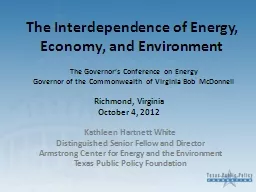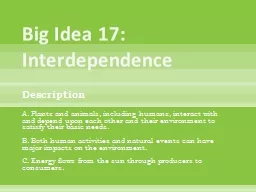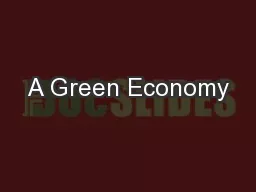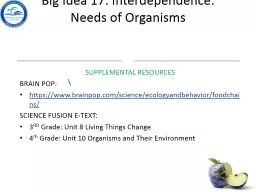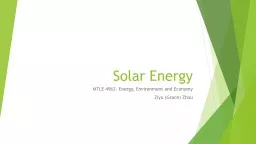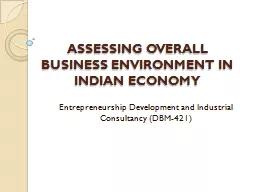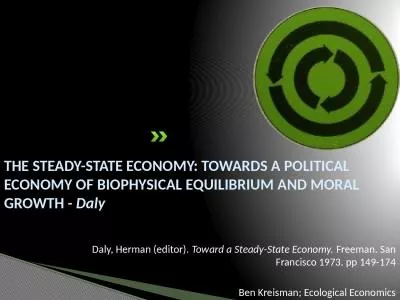PPT-The Interdependence of Energy, Economy, and Environment
Author : phoebe-click | Published Date : 2018-10-29
Richmond Virginia October 4 2012 The Governors Conference on Energy Governor of the Commonwealth of Virginia Bob McDonnell Kathleen Hartnett White Distinguished
Presentation Embed Code
Download Presentation
Download Presentation The PPT/PDF document "The Interdependence of Energy, Economy, ..." is the property of its rightful owner. Permission is granted to download and print the materials on this website for personal, non-commercial use only, and to display it on your personal computer provided you do not modify the materials and that you retain all copyright notices contained in the materials. By downloading content from our website, you accept the terms of this agreement.
The Interdependence of Energy, Economy, and Environment: Transcript
Download Rules Of Document
"The Interdependence of Energy, Economy, and Environment"The content belongs to its owner. You may download and print it for personal use, without modification, and keep all copyright notices. By downloading, you agree to these terms.
Related Documents

